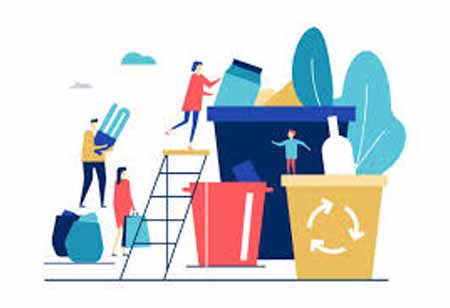THANK YOU FOR SUBSCRIBING
Be first to read the latest tech news, Industry Leader's Insights, and CIO interviews of medium and large enterprises exclusively from Gov CIO Outlook
THANK YOU FOR SUBSCRIBING

By
Government CIO Outlook | Thursday, January 27, 2022
Stay ahead of the industry with exclusive feature stories on the top companies, expert insights and the latest news delivered straight to your inbox. Subscribe today.
Smart waste management services are redefining city management, and by combining them, they can create smart cities.
Fremont, CA: Waste management is an essential component of every country's development. The problem of waste management is now a top priority as a result of the rapid rise of urbanization and industrialization. Waste management practices differ significantly between countries, sectors, and locations. Solid waste management encompasses various activities, from waste collection to waste recycling and reuse. These operations can benefit from technology to boost throughput at every level.
Smart Waste Management is an integral part of the equation when it comes to technology. Smart waste management is defined as applying technology to make waste management more effective and efficient. This allows trash collectors to plan more efficient routes while emptying the container and reduces the likelihood of any bin remaining full for longer than a week.
Two technical components normally operate together to increase smart waste management—the hardware and software.
Hardware
Hardware is the first one. Microchips are used to track a range of information, such as when the waste bin receives the most trash and how full it is. They can also use their GPS capabilities to alert trash management companies or governments if an unfavorable occurrence occurs, such as a sudden temperature increase or container transfer. Municipalities can use IoT systems created expressly for solid waste management to access data analytics and real-time insights. In addition to hardware, mobile applications are used to address shortcomings in the traditional waste management system, such as keeping track of drivers while they are on the road.
Software
The software system is the second. All of the data collected by the trash container is transferred here to be used for waste management purposes. When a container is full, for instance, it will be immediately placed on the route. This allows drivers to effortlessly drive the most efficient route. They don't have to check on containers that aren't yet full, and those that are can be dumped right away. This reduces the possibility of trash being dropped on the road and the amount of greenhouse gases created by vehicles. In an integrated waste management system, the current collection and transportation of municipal solid trash involves several technical stages and developing technology.
I agree We use cookies on this website to enhance your user experience. By clicking any link on this page you are giving your consent for us to set cookies. More info

However, if you would like to share the information in this article, you may use the link below:
www.govciooutlookapac.com/news/how-does-technology-improve-waste-collection-process-nid-1504.html



